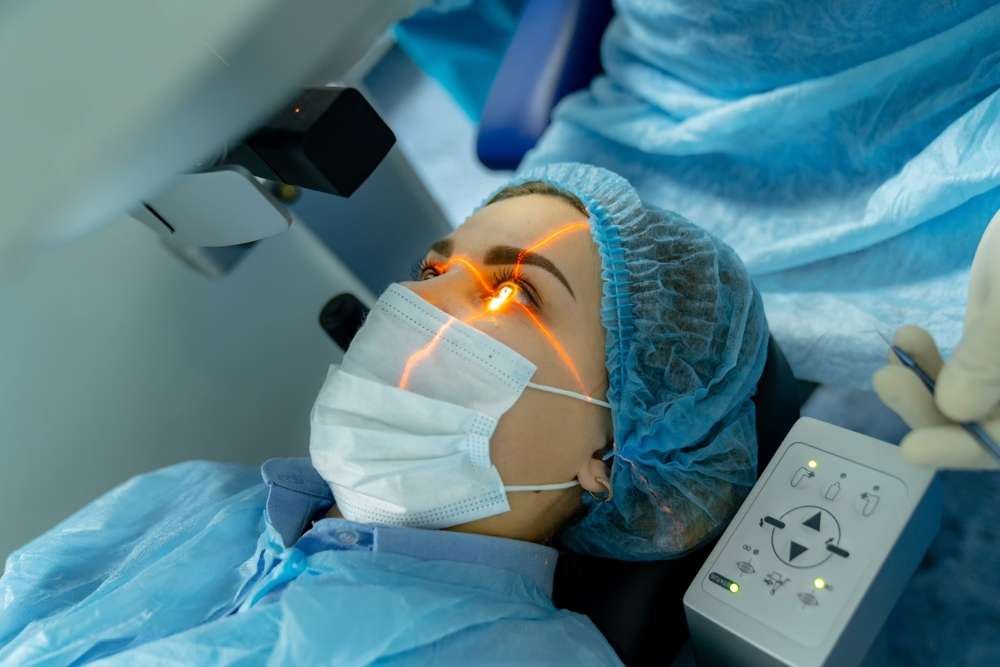Imagine Life Without Glasses: Discover How LASIK Surgery Can Transform Your Vision
Living with glasses or contact lenses can be challenging, affecting everything from sports activities to daily routines. LASIK eye surgery has emerged as a revolutionary solution, offering freedom from corrective eyewear through a precise, blade-free procedure. This comprehensive guide explores how LASIK works, its benefits, and what you can expect from this vision-transforming treatment.

For decades, people with vision problems have relied on glasses or contact lenses to see clearly. LASIK eye surgery has emerged as a popular alternative, offering the possibility of achieving excellent vision without corrective eyewear. This minimally invasive procedure has helped millions worldwide experience the freedom of clear, natural sight.
What is LASIK Eye Surgery and How Does it Work?
LASIK, which stands for Laser-Assisted In Situ Keratomileusis, is a refractive surgery that uses precise laser technology to reshape the cornea. During the procedure, an eye surgeon creates a thin flap in the cornea’s outer layer, then uses an excimer laser to remove microscopic amounts of tissue from the underlying corneal layer. This reshaping allows light to focus properly on the retina, correcting vision problems.
The entire procedure typically takes 10-15 minutes per eye and is performed on an outpatient basis. Most patients experience immediate improvement in their vision, with full results becoming apparent within a few days to weeks.
What Vision Problems Can LASIK Correct?
LASIK surgery effectively treats several common refractive errors. Myopia, or nearsightedness, occurs when the eye is too long or the cornea is too steep, causing distant objects to appear blurry. Hyperopia, or farsightedness, happens when the eye is too short or the cornea is too flat, making close objects difficult to see clearly.
Astigmatism, another condition LASIK can address, results from an irregularly shaped cornea that causes blurred vision at all distances. Many patients have a combination of these conditions, which LASIK can often correct simultaneously during a single procedure.
What is the Difference Between LASIK and Other Laser Eye Surgeries?
While LASIK is the most well-known laser eye surgery, several other procedures exist. PRK (Photorefractive Keratectomy) was the predecessor to LASIK and involves removing the cornea’s outer layer entirely rather than creating a flap. SMILE (Small Incision Lenticule Extraction) is a newer technique that requires only a small incision to remove corneal tissue.
LASEK (Laser Epithelial Keratomileusis) combines elements of both LASIK and PRK, while Epi-LASIK uses a specialized tool to separate the epithelium. Each procedure has specific advantages and may be recommended based on individual eye characteristics, corneal thickness, and lifestyle factors.
What to Expect When Doing LASIK Eye Surgery?
The LASIK experience begins with a comprehensive eye examination to determine candidacy. Ideal candidates are typically over 18 years old, have stable vision prescriptions, adequate corneal thickness, and healthy eyes without certain conditions like severe dry eye or autoimmune diseases.
On surgery day, patients receive numbing eye drops and may be given a mild sedative for relaxation. The surgeon uses advanced mapping technology to create a personalized treatment plan. During the procedure, patients remain awake and are asked to focus on a light while the laser works. Most people experience minimal discomfort during the surgery itself.
Recovery involves following post-operative instructions carefully, including using prescribed eye drops, avoiding rubbing the eyes, and attending follow-up appointments. Most patients return to normal activities within a day or two, though complete healing may take several weeks.
| Procedure Type | Provider Examples | Average Cost Range |
|---|---|---|
| Standard LASIK | LasikPlus, TLC Laser Centers | $2,000-$3,000 per eye |
| Custom LASIK | Clearly LASIK, NVISION | $2,500-$4,000 per eye |
| All-Laser LASIK | SharpeVision, Kugler Vision | $3,000-$5,000 per eye |
Prices, rates, or cost estimates mentioned in this article are based on the latest available information but may change over time. Independent research is advised before making financial decisions.
What Are the Success Rates and Potential Risks?
LASIK boasts impressive success rates, with studies showing that over 95% of patients achieve 20/40 vision or better, and approximately 85% achieve 20/20 vision or better. These results have made LASIK one of the most successful elective procedures in medicine.
However, like any surgical procedure, LASIK carries potential risks and side effects. Common temporary effects include dry eyes, glare, halos around lights, and light sensitivity. Most of these resolve within the first few months after surgery. Serious complications are rare but can include infection, corneal flap problems, or overcorrection or undercorrection requiring additional treatment.
The key to successful outcomes lies in choosing an experienced surgeon, following pre and post-operative instructions, and having realistic expectations about results. While most patients achieve excellent vision, some may still need glasses for certain activities like reading fine print or night driving.
LASIK eye surgery continues to evolve with advancing technology, offering hope for clearer vision and greater freedom from corrective eyewear. By understanding the procedure, costs, and potential outcomes, individuals can make informed decisions about whether this transformative surgery is right for their vision needs and lifestyle goals.




